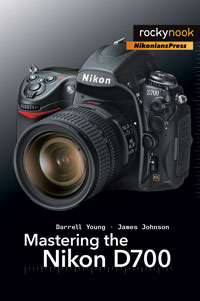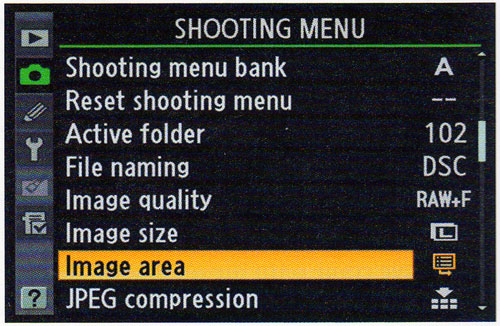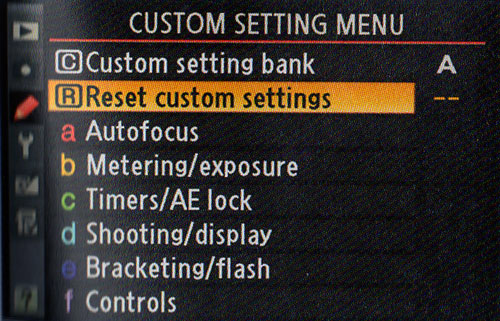
Mastering the Nikon D700
rockynook NikoniansPress
ISBN: 978-1-933952-23-9
www.rockynook.com
Price: US $39.95, CAN $47.95
244 pages
I got my Nikon D700 just in time for a trip to Norway with my band. I know it’s going to be a lot to lug around in comparison to my hip-hugging Fuji f100fd, but that’s the price you pay for wanting superior images.
Getting those images is challenging enough with learning how to use a new camera and thumbing through the manual to find out what this term and that term means. Many of them were totally unfamiliar to this old film winder. Then I got the book.
The book I refer to is the rockynook NikoniansPress publication, Mastering the Nikon D700, by Darrell Young and James Johnson.
Darrell Young’s Mastering the Nikon D300, also published by rockynook, was highly acclaimed for its “breadth of content, depth of coverage, and warmth of delivery,” and this book on the D700 is evolved from that previously released publication. James Johnson has taken the lead set by Darrell Young and has done an admirable job in describing, explaining, and showing just how to use this dazzling camera. Both men are fine photographers in their own right and have many years of practical and teaching experience.
What is so effective about this book is the anecdotal examples throughout. The Nikon manual can be used in conjunction with Mastering the Nikon D700, and the authors refer to specific pages as we wend through the chapters and discover the many features of the camera. Where the manual gives you the nuts and bolts, Mastering the Nikon D700 takes you many steps further by giving you choices and situations which are practical and easy to understand, making it a lot more fun.
Because this camera (it’s a computer, really) has so many functions and features, more than once I have been stopped cold in my tracks as I meandered my way through the various menus just to “check it all out.” I came upon terminology I’d never heard before. The Nikon manual might explain what the camera will do in a specific setting but there is no practical advice, and that’s where Mastering the Nikon D700 takes over.
The color photos used in the book are much easier to look at and read than the clinical gray and white charts in the manual. I sat reading with the book and the manual, along with the camera, as was suggested by the authors. Good idea. I referred to the manual if I felt the need, especially in unfamiliar territory. Sometimes it helps to have it there. All lessons in the book refer, by page, to the manual if you want to do that. But if you have the book and the camera together and you just simply read and follow what the authors are saying you will soon become an expert on that, and each subsequent, lesson.

Throughout, Young and Johnson have distributed practical areas of interest such as reviews and important notes, all of which are highlighted in gray to make sure you understand the why’s and wherefores. The authors obviously want to make sure that the reader is engaged in the practical aspects of the camera’s functions, not just the technical.
Surprisingly, there are relatively few real photographs in this book. The ones that are there are basically set up to introduce each new chapter. They reflect the chapter at hand and are beautifully photographed. Most of the images in the book are of the camera, the functional buttons, and the various menus, in clear full color just like you will see as you prompt through the various menu functions and commands. Each is explained in simple detail.

I had to reread some of the lessons’ paragraphs because this camera has the ability to do things I didn’t know cameras could do. Like having Custom Setting Banks which direct your camera in all aspects of exposure and focus. And then there are Shooting Menu Banks, which set up your D700 to be like several different cameras. When I first saw these terms I was sure I would never understand them. Boy, was I wrong. Not only do I understand them, but once they were clear it took me very little time to set up the parameters I wanted, name the Banks, the Custom Settings, and go outside to try it all out. They worked just like the authors said they would.
Maybe you’re an avid photographer who has had several Digital Single Lens Reflex cameras and you figure can muddle through the learning process with little trouble. I say to you that it’s worth the price of the book just to have these two guys in your pocket. Really! The book isn’t all that big, measuring 6″ X 9″ X 1/2″, so you can carry it with you fairly easily. This camera is its own beast and needs that special attention to get the most out of it.
If you’re just starting out in the DSLR world you will be amazed how fast you can learn to use this fine instrument. There is no need to be intimidated. Just a few hours with this book and your camera and you’ll even be an expert in White Balance.
I would suppose that anyone willing to spend thousands of dollars for a camera, and then spend even more for the lenses, would want to get the most bang for their buck, get the best pictures they can get, and enjoy the almost unlimited photographic benefits this camera can generate. I doubt that there is a better, more informative, and easier to read publication on the D700 than Mastering the Nikon D700 from rockynook. Don’t even hesitate for one second. Get it, and you’ll have a lifetime of great picture taking at your fingertips.
email – MyMac Magazine – Twitter – Advertise – Reviews Archive – Podcast
 |
Run Windows on your Mac without rebooting!  Parallels Desktop 4.0 for Mac provides the complete suite of essentials to run Windows on Mac the easy, fast and powerful way. |

Leave a Reply
You must be logged in to post a comment.